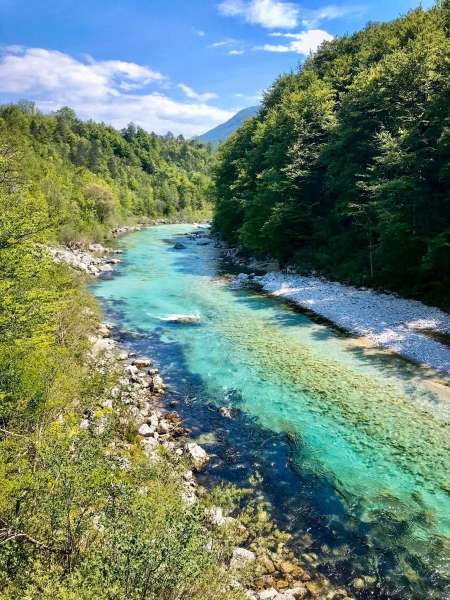STA, 9 April 2019 - Slovenia and Croatia have been locked in the border dispute ever since they declared independence almost 28 years ago. The countries have seen several intelligence scandals since, the last one prompting PM Marjan Šarec to call a session of the National Security Council. Below is a timeline of the developments.
25 June 1991 - Slovenia adopts the Basic Constitutional Charter on Independence, which states that the borders of the republics in the former Yugoslavia are the internationally-recognised borders of the new state. Croatia makes a similar declaration.
11 January 1992 - The Arbitration Commission of the Conference on Yugoslavia (the Badinter Commission) adopts the position that the borders of the former Yugoslav republics are the borders of the newly-emerged countries in the region.
28 April 1997 - Slovenia and Croatia sign the Agreement on Border Transport and Cooperation (SOPS) in a bid to facilitate the movement of people living in border areas (all municipalities within the 10-km belt of the border on both sides). The Croatian parliament ratifies the treaty the same year, Slovenia follows suit in June 2001. Even though the agreement also imposes the fishing regime in the Bay of Piran, incidents involving fishermen would be rife in the years to come.
January 1998 - Two operatives of the Slovenian Intelligence and Security Service (OVS) stray into Croatia in a spy van near the town of Zavrč. Their van is confiscated by the Croatian authorities, including the equipment with intelligence. Croatia does not return the van to Slovenia until 2001.
20 July 2001 - The Slovenian and Croatian governments endorse and initial a draft agreement on the border hammered out by the prime ministers, Janez Drnovšek and Ivica Račan. This is the first time that the two countries determine the border at sea. The agreement gives Slovenia 80% of the Bay of Piran and a corridor with access to international waters; Croatia retains contact with Italian territorial waters. The Slovenian parliamentary Foreign Policy Committee confirms the treaty, but the Croatian parliament is staunchly against.
4 September 2002 - Croatian Prime Minister Ivica Račan sends a letter to Slovenia in which Croatia announces it is withdrawing from the Drnovšek-Račan agreement.
3 October 2004 - Croatia implements a protective ecological and fisheries zone in the Adriatic Sea a year after declaring it despite protests from Slovenia and Italy.
10 June 2005 - The governments of Slovenia and Croatia sign the Brijuni Declaration at their first joint meeting, pledging to avoid incidents on the border and to respect the state on the ground as on 25 June 1991.
4 October 2005 - The Slovenian National Assembly passes a law declaring a Slovenian ecological zone and epicontinental belt in the Adriatic which includes a provision that says the demarcation still needs to be agreed at bilateral level.
5 January 2006 - Slovenia declares the whole of the Bay of Piran as its fishing area.
31 August 2006 - In one of the gravest escalations, Slovenia deploys members of a special police force to the area near the Slovenian border village of Hotiza on the north bank of the Mura river in the north-east of the country after Croatia has begun building an embankment and a road towards the Slovenian settlement Brezovec-part or Mirišče without having obtained consent from Slovenia.
June 2007 - Former Slovenian Prime Minister Tone Rop tells a reporter off the record that, prior to the 2004 election, the Slovenian intelligence agency SOVA had intercepted the then opposition leader Janez Janša and Croatian Prime Minister Ivo Sanader as they were plotting border incidents in the Bay of Piran. Due to the revelations, Rop is later fined by court for disclosure of secret data but later acquitted by a higher court.
26 August 2007 - The Slovenian and Croatian prime ministers, Janez Janša and Ivo Sanader, reach an informal agreement in principle at their meeting in Slovenia's Bled to put the border issue to the International Court of Justice in The Hague.
4 November 2009 - Prime Minister Borut Pahor and his Croatian counterpart Jadranka Kosor sign an arbitration agreement in Stockholm, Sweden, under the auspices of the Swedish EU presidency. The treaty sets forth that an arbitration tribunal shall determine the land and sea border, Slovenia's junction with high seas and a regime for the use of maritime zones.
22 July 2015 - The Croatian newspaper Večernji List publishes a recording of phone conversations between Slovenian member of the arbitration tribunal Jernej Sekolec and Slovenian agent in the case Simona Drenik discussing details of the tribunal's confidential deliberations. The scandal prompts the pair to step down and Croatia withdraws from the arbitration process although the tribunal later decides it will resume its work.
29 June 2017 - The arbitration tribunal declares its final decision on the border, awarding Slovenia the bulk of the Bay of Piran, as well as a belt extending 2.5 nautical miles in width that represents Slovenia's junction with the open seas. The border on land largely follows the demarcation of cadastral municipalities.
3 April 2019 - The news web site 24ur.com reports that arbiter Sekolec and agent Drenik were tapped by the Croatian Intelligence Service (SOA) through its operative Davor Franić. The commercial broadcaster POP TV later reveals that the Croatian government had attempted to prevent the publication of the revelations by means of a go-between. Slovenian PM Marjan Šarec responds on 9 April by calling a session of the national Security Council and the Foreign Ministry summons the Croatian ambassador to Slovenia and the Slovenian ambassador to Croatia for talks in Ljubljana.







